
Europe and Mediterranean: World Of Fine Art
Regent Seven Seas Cruises
One of Europe's most visually stunning cities, Barcelona balances the medieval intimacy of its Gothic Quarter with the grace and distinction of the wide boulevards in the Moderniste Eixample. It was the home of architect Antoni Gaudí, whose Sagrada Familia Cathedral, Park Güell and Casa Milà are the most profound statements of Modernisme. View the splendid works at the Picasso Museum and the Miro Foundation, or discover Barcelona's passionate ambiance at a flamenco show.

All onboard gratuities
Select complimentary shore excursions**
Unlimited beverages, including fine wines and premium spirits served throughout the ship
In-suite refrigerator replenished daily with soft drinks, beer and bottled water
24-Hour room service
No charge for specialty restaurants
Welcome bottle of Champagne
$100 Shipboard credit (per suite)††
Executive Member Benefit
Executive Members receive an annual 2% Reward, up to $1,250, on qualified Costco Travel purchases
Executive Members receive an additional $100 shipboard credit (per suite, not combinable with certain past-guest discounts)††
Digital Costco Shop Card
Member Exclusive: Digital Costco Shop Card with every Regent Seven Seas Cruises® sailing†
Sailing Itinerary

Note: Cruise itineraries are subject to change. Please verify ports and times directly with the cruise line.
Overview
Located about 80 kilometers northwest of Rome, the Port of Civitavecchia is the port of Rome and a busy ferry and cargo port serving Italy and southern Europe. Lying on Italy’s eastern shores on the Tyrrhenian Sea, the Port of Civitavecchia has excellent direct connections to Rome. It is an important cruise and ferry port with regular passage to Sardinia, Malta, Sicily, Tunis, and Barcelona. Fishing is of secondary importance to the Port of Civitavecchia. In addition to ocean-going traffic, the Port of Civitavecchia also contains a thermoelectric center and metallurgical works. In 2006, over 51 thousand people called the Port of Civitavecchia home. The Port of Civitavecchia was built on an earlier Etruscan settlement. Emperor Trajan founded the Port of Civitavecchia in the early 2nd Century, calling it Centumcellae. Today, Trajan’s Port is preserved within today’s Port of Civitavecchia. A busy growing town during the late Roman era, the Port of Civitavecchia was attacked by Vandals and then destroyed by the Saracens in 828 AD. Residents escaped to the nearby Allumiere Mountains where Pope Leo IV built a walled town in 854. Eventually, the people returned to Civitavecchia (the name means “old city”). At the end of the 15th Century, the Port of Civitavecchia was under frequent attack by pirates. The naval arsenal was constructed in 1508. Pope Paul III commissioned the building of the keep, which was designed by Donato Bramante and then finished by Michelangelo in 1537, to protect the Port of Civitavecchia from pirate attacks. In 1696, Civitavecchia became a free port under Pope Innocent XII. Because it was Rome’s main port, the French occupied the Port of Civitavecchia in 1849. The Port of Civitavecchia was linked to Rome by the Rome and Civitavecchia Rail Road in 1859. When the Port of Civitavecchia became part of the Kingdom of Italy in 1870, it was one of the Papal State’s most strongly fortified towns when Papal troops welcomed General Nino Bixio on behalf of the Italian unification forces into the Port of Civitavecchia fortress. World War II brought destruction to as much as three-quarters of the Port of Civitavecchia. Reconstruction enlarged the Port of Civitavecchia beyond its pre-war area. The Authority Portuale Civitavecchia (Port of Rome) is responsible for managing and operating the Port of Civitavecchia as well as the ports of Fiumicino and Gaeta. The modern Port of Civitavecchia is at the center of rail, road, and air networks that link it with central Italy and the world. The Port of Civitavecchia can handle about 11 million tons of cargo per year and over 1.5 million passengers. Cargoes include forest products, cereals, iron and steel, chemicals, automobiles, containers, and liquid bulk. In 2007, the Port of Civitavecchia welcomed 856 cruise vessels carrying 1.6 million passengers, and the total number of passengers using ferries and cruise vessels was 3.8 million. In 2007, the Port of Civitavecchia handled a total of 7.7 million tons of cargo. This total included 1.5 million tons of liquid bulk, 1.7 million tons of solid bulk, 4.6 million tons of packages, and 31.1 thousand TEUs of containerized cargo. The Port of Civitavecchia contains 28 berths of a total of 5.6 thousand meters in length alongside depths from 6 to 18 meters. Port properties include five warehouses containing 36 thousand square meters for handling and storing cargo. The intermodal terminal includes seven thousand square meters of storage space and 12.5 thousand square meters for loading/unloading rail cars and parking. The Port of Civitavecchia is one of the busiest ferry ports in the world. Just 80 kilometers northwest of Rome, it is the main tourist destination for people traveling to the Eternal City. It is also a central port for ferries carrying passengers to more local destinations. The ferry terminal offers a complete line of amenities. Different ferry companies offer services to various destinations. Moby Lines handles crossings to Olbia, Sardinia. Corsica Sardinia Ferries runs services to Golfo Aranci. Grimaldi Ferries carries passengers to Barcelona and Tunis, and Grand Navi Veloci operates a route to Tunis. Ferrovie dello Stato operates a combined rail-ferry service to Golfo Aranci.
Overview
Portofino is a fishing village on the Italian Riviera coastline, southeast of Genoa city. Pastel-colored houses, high-end boutiques, and seafood restaurants fringe its Piazzetta, a small cobbled square overlooking the harbor, which is lined with super-yachts. A path leads from the Piazzetta to Castello Brown, a 16th-century fortress and museum with art exhibitions and panoramic views of the town and the Ligurian Sea.
Overview
With more than 300 days a year of sunshine, residents in Monaco can take advantage of the Mediterranean, and all of its seaside activities. Moreover, Monaco's proximity to the Southern Alps, which are only 1 hour away by car, allows for easy access to the ski slopes.
Overview
Marseille, a port city in southern France, has been a crossroads of immigration and trade since its founding by the Greeks circa 600 B.C. At its heart is the Vieux-Port (Old Port), where fishmongers sell their catch along the boat-lined quay. Basilique Notre-Dame-de-la-Garde is a Romanesque-Byzantine church. Modern landmarks include Le Corbusier’s influential Cite Radieuse complex and Zaha Hadid’s CMA CGM Tower.
Overview
Barcelona is a charming, cosmopolitan port on the shores of the Mediterranean Sea. This prosperous and bilingual (Spanish and Catalan) metropolis measures up to a city such as Madrid: its museums, theaters, art galleries, and nightlife area are of an impressively high standard. Besides that, this art and design center has a lot of interesting sights to offer to its visitors. The best place to watch people go by, stroll, or simply relax, is 'Las Ramblas', a pedestrian street with dozens of outdoor cafes. Here, you’ll find flower stands, book kiosks, and small market stalls where they sell birds and small animals. You’ll also find an endlessly fascinating flowing receptacle of pageant jugglers, singers, dancers, puppeteers, sidewalk artists, living statues, and assorted oddballs on parade. Nearby is 'Place Real', with plenty of bars and restaurants, and 'Palau Guell', built by the Catalan architectural genius Antoni Gaudi in his undulating art-nouveau style. After having seen these sights, stroll the narrow winding streets of the 'Barri Gotic', the medieval Gothic quarter full of interesting tapas bars, and cafes. Check out Picasso’s old hangout, 'Els Quatre Gats', which has been renovated without losing its bohemian charm. Or head for the old Barceloneta section on the waterfront. This working-class area, which was always slightly rundown and scruffy-looking, is now packed with paella restaurants. The new beach area, which runs from Barceloneta to the Olympic Village, is much cleaner than the old beach area. Although some people believe that it has been cleaned up considerably, it might be a wise idea to stay out of the water. Fortunately, the beach itself is already a feast for the eyes (and ears), with its huge and roaring waves.
Overview
The city of Cadiz, which practically accounts for the whole of the municipal area, lies to the east of the bay of the same name, in an area that could be described as a half island, half peninsula, connected to the mainland by a slender, sandy strip. Its situation is responsible for its obvious maritime tendencies, and it has been dedicated to seafaring pursuits since its foundation. The Phoenicians, Greeks, Romans, and Arabs all passed through what is believed to be the world’s oldest city, and it was here that Spain’s first democratic Constitution was drawn up. Despite its essentially urban nature, it also boasts areas of natural interest, such as the beaches of La Cortadura and El Chato, as well as Santibanez Mud Flats, which are part of Cadiz Bay Natural Park. The city, popularly known as “La Tacita de Plata” (The Silver Cup), has an unmistakable marine flavor, and its people are famous for their good humor and hospitality, as witnessed by the famous carnival; it boasts monuments of great interest, such as the Cathedral, the city walls, Holy Cross Parish Church, the Genoese Park, Puerta de la Caleta, etc. All places of indubitable charm, to which we must add the city’s cuisine and beaches, famous for their beauty, such as La Caleta, Santa Maria del Mar, and La Victoria. History This legendary city was founded by the Phoenicians in 1100, although the oldest archaeological remains date back to around 800 B.C. Mythology links its foundation with Hercules and the legendary Tartessia. The Phoenicians called the city Gadir, meaning “closed area”. They built a commercial factory and a temple in honor of the god Melkart. In 206 B.C. it was joined with Rome as an allied city under the name Gades. This was the start of one of the most prosperous periods in Cadiz’s history, and it became one of the most important cities in the Roman Empire. In the Imperial age, it was known as “Augusta Urbs Julia Gaditana”. Its inhabitants were soon granted Roman citizenship. When the Moslem invasions began in the 8th century, it provided the armies with significant support by facilitating their passage, though it soon suffered a decline in importance which would prevail until the Christian conquest and re-settlement at the hands of Alfonso X, known as The Wise, between 1260 and 1262. During the 15th century, the city’s economic activity was based essentially on sea commerce, particularly in North Africa. In 1493, the Catholic Monarchs made Cadiz Crown property; it had belonged to the Ponce de Leon estate since 1470. With the discovery of America, Cadiz’s rise to greatness began, culminating in the 18th century. Its natural conditions meant that whenever ships couldn't berth in Seville, they could do so in Cadiz. In 1717, Seville’s Contracting House was moved to Cadiz, the monopoly of American trade traveling with it; however, this situation was short-lived, as the concession to trade with the New World was extended to twelve ports in 1778. The town center was consolidated in the 18th and 19th centuries when urban renovation was carried out and most of the monuments and buildings that we know today were built. La Isla del Leon, now San Fernando, was the setting for the earliest meetings of the famous Cadiz Cortes, general constituent assemblies set up to provide Spain with a Constitution during the War of Independence. Fleeing from the French, the Government took refuge near Cadiz, the only stronghold that the French were unable to capture during the whole of the war. Between 1810 and 1811, Government assemblies took place in La Isla de Leon Theatre; in February 1811, the proximity of Napoleon’s troops forced them to move to San Felipe de Neri Church in Cadiz, returning once more to La Isla de Leon before finally making their definitive journey back to Madrid in 1813. After the war, the city continued at the vanguard of liberalism, with its support for Riego in 1820 and its leading role in the face of the French invasion in 1823. In a similar vein, Cadiz was at the forefront of the 1868 uprising. At the end of the 19th century, the city’s economic decline began. A series of events including the loss of the colonial market, culminating in the 1898 Disaster, and the African War, among others, ushered in a crisis that was to have grave consequences.
Overview
It traces its origins back to a small trading port of the Phoenicians, Greeks, and Carthaginians. Some historians have indicated that the place was originally the famous Portus Hannibalis named by the famous Roman general, Hannibal Barca. During the following Moorish occupation they renamed the place “Burj Munt”. Located at the mouth of the River Arade it provides a natural harbour and has at times been known in its past as a home for smugglers and pirates. The river also provides sea access to the ancient city of Silves which was the capital of the Algarve during the Moorish occupation.
Overview
Lisbon is Portugal’s hilly, coastal capital city. From the imposing São Jorge Castle, the view encompasses the old city’s pastel-colored buildings, Tagus Estuary, and Ponte 25 de Abril suspension bridge. Nearby, the National Azulejo Museum displays 5 centuries of decorative ceramic tiles. Just outside Lisbon is a string of Atlantic beaches, from Cascais to Estoril.
Overview
Porto is the second largest city in Portugal. The greatest sites in Porto are its five bridges, three modern, two nineteenth century, and all of them sensational. The valleys and tributaries that run along them form some of the most spectacular landscapes in the country. The wealth that flowed into the city from the 15th century onward is evidenced throughout Porto. Trade in the commodities from Portugal’s newly claimed lands brought Brazilian gold and exotic woods to embellish Porto’s many elaborate churches and palaces. Prosperous merchants spent lavishly on paintings and the ever-famous azulejos. The true fascination with Porto lies very much in the day-to-day life of the place, with its prosperous business core surrounded by well-to-do suburbs as well as depressed housing estates, tempered by a heart of cramped streets and ancient alleys wholly untouched by the planner s. Porto is renowned for the great variety of light, fresh, and often fizzy wines as well as the heavyweight Port wines. Vinho verde ‘sparkling wine’, is grown in the northwest. Country wines from the northeast are made in the area between the Spanish border to the north and east and four mountain ranges to the west. The VinhoVerdee region is best known for its slightly under-ripe wines, with a slightly sparkling character. They are mainly white, and the best is made from the alvarinho grape, as well as the azal, lAurelioa, and nandrabigato. Wines from the Douro region are beginning to be accepted as some of Portugal’s finest. Although excellent white wines are produced here, the area is best known for its great reds. The accommodations in Porto range from inexpensive rooms (southeast of Sao Bento station) that will fit just about any budget to more expensive places around the city. They are generally a good value but in winter investing in a more expensive place with better facilities to counter the field is worth the little extra.
Overview
Situated beside the Atlantic Ocean, A Coruna is a historic city whose history has maintained close links with its old fishing and commercial port. The peninsula on which the Old City stands also contains the Tower of Hercules, one of the symbols of the city, which is an interesting Romanesque collection of streets, squares, and medieval churches. The Aquarium Finisterrae, the Domu, and the Science Museum are some of the places that show the more modern, recreational side of the provincial capital, which offers one of its most beautiful facets on the wide beaches of Riazor and Orzán. All this is completed with recognition throughout the country, marked by the excellence of its seafood and meats coming from the inland parts of the province. The Aquarium Finisterrae, the Domus, and the Science Museum are some of the places that show the more modern, recreational side of the provincial capital, which offers one of its most beautiful facets on the wide beaches of Riazor and Orzán. All this is completed with cuisine recognized throughout the country, marked by the excellence of its seafood and meats coming from the inland parts of the province. The harbor has always been the scene of some of the most important historical events in the city, like the defeat of the English privateer Francis Drake in 1589 thanks to the resistance of the people of Coruña, led by the heroine María Pita. The city's most important civil buildings also deserve a visit. The City Hall is situated in the Plaza de María Pita, the nerve center of the city. It is an elegant, monumental building built at the beginning of the 20th century, characterized by its porches and galleries and by three towers finished with attractive cupolas. Another sight not to be missed in the center of A Coruna is the San Carlos Garden, declared a Historic-Artistic site. The walls of the fortress of San Carlos, which dates from 1843, house this unusual space in which the Archive of the Kingdom of Galicia is based and whose center is presided over by the tomb of Sir John Moore, a British general who died in 1809 during the battle of Elvina. Surrounding the Old City is the coastal area, where A Coruña mixes the traditional and the modern. Beside the port in the Avenida de la Marina, are the typical houses with white glazed galleries (19thC), architectural elements making up one of the best-known features of A Coruna and which earned it the name of 'Glass City'. The Castle of San Anton, at one end of the harbor area, was built at the end of the 16th century with a defensive character and later altered in the 18th. It currently houses the Provincial Archaeological Museum, which takes an interesting journey through Galician prehistory using various pieces of metalwork, objects, and tools corresponding to the hill fort culture. On the long Coruna promenade, there are other outstanding cultural opportunities. The Aquarium Finisterrae, situated near the Tower of Hercules, houses one of the largest aquariums in Spain and includes rooms with interactive exhibitions related to the sea. Human beings are the central theme of Domus or the House of Man, located in a futuristic building designed by the architect Arata Isozaki. Inside, various interactive rooms showman from a multidisciplinary point of view. The promenade finally leads to the wide Riazor and Orzan, beaches, the main areas for the people of A Coruna to relax. The tour of the museums can be completed by visiting the Science Museum, situated in Santa Margarita Park, one of the provincial capital's most important green areas. Its outstanding feature is the Planetarium, while its permanent exhibition approaches scientific, technological, and natural principles interactively. The cuisine of La Coruna brings together the best of the coast and the interior. From the coast comes excellent seafood: small crabs, barnacles, spider crabs, Norway lobster, etc. Succulent recipes based on fish are also cooked, such as angler fish stew, Galician-style hake (with onion, garlic, and carrot), or griddled soles. Pasties serve as a transition to the interior as they can be made either with fish and shellfish or with meat. As for meat, pork can be used to make the famous pork shoulder with parsnip tops, while Galician beef is protected with a Denomination of Origin. Any of the magnificent Galician wines that have a Denomination of Origin (Monterrei, Ribeira Sacra, Ribeiro, Rías Baixa,s, and Valdeorras) can be used to accompany these dishes. And, for dessert, there is the famous Santiago cake (with almonds, su,, a,r, and our). Around the provincial capital you can visit interesting places like Betanzos, declared a Historic-Artistic Site, Santiago de Compostela, capital of Galicia and World Heritage City, or Ferrol.
Overview
Visiting Honfleur means, traveling through history in the heart of an exceptionally preserved site. Our old maritime city is very well known for its old dock but we are inviting you to experiment with its particular atmosphere walking through its old narrow paved streets. Honfleur is certainly proud of its prestigious past but the city is also definitely turned toward the future. It is a dynamic harbor offering an increasing number of cultural activities: exhibitions, concerts, and traditional feasts such as the Shrimp Feast or the Russian Film Festival. Take the time to discover Honfleur.
Overview
Antwerp is the largest city in Flanders, the northern part of Belgium. Some 60% of the ten million Belgians are Flemings. They speak Dutch. Like their French and German-speaking compatriots, they have their parliament and government. The capital of Flanders is Brussels, also the capital of federal Belgium and the heart of Europe. The city's 468,717 inhabitants (as recorded on 02/2004) live in a territory, which covers approximately 22,076 hectares. The city is located between latitude 51°13'16' and 4°23'60' eastern longitude. It has a moderate maritime climate.
Overview
Antwerp is the largest city in Flanders, the northern part of Belgium. Some 60% of the ten million Belgians are Flemings. They speak Dutch. Like their French and German-speaking compatriots, they have their parliament and government. The capital of Flanders is Brussels, also the capital of federal Belgium and the heart of Europe. The city's 468,717 inhabitants (as recorded on 02/2004) live in a territory, which covers approximately 22,076 hectares. The city is located between latitude 51°13'16' and 4°23'60' eastern longitude. It has a moderate maritime climate.
Overview
IJmuiden lies near the mouth of the North Sea Canal, which connects the capital city Amsterdam, 24 km (15 mi) to the east, with the North Sea. The North Sea locks near IJmuiden together form the largest sea lock complex in the world.The majority of fish in the Netherlands is sold via IJmuiden. This city not only boasts the largest fishing harbour in Europe but also the largest fish auction in the Netherlands.
Onboard the Seven Seas Navigator
Seven Seas Navigator
Year Built: 1999
Year Refurbished: 2019
Double Occupancy Capacity: 490
Seven Seas Navigator® has few equals, as all accommodations are suites with ocean-views, the majority with private balconies. Her 490 guests enjoy an unusual level of luxury and some of the highest space and service ratios at sea.
Activities & Services (included in cruise)

Library
- Card Room
- Casino
- Disco/Nightclub
- Movies
- Fitness Center
- Sauna/Steam Room
- Educational Programs
- Pool - Outdoor
- Sports Facilities
- Whirlpool/Jacuzzi
- Bars/Lounges
- Library
- Wi-Fi
- Organized Age Specific Activities
- Teen Programs
- Business Center
- Conference Center
- Dry Cleaning/ Laundry Service
- Duty-Free Shops/Boutiques
- Elevators
Activities & Services (available for an extra fee)

Full-Service Spa
- Beauty Salon
- Full-Service Spa
- Infirmary/Medical Center

Compass Rose
Specialty Dining
Compass Rose: Much thought was given to the design of Compass Rose, the flagship restaurant of Regent Seven Seas fleet. The dining room is outfitted with rich woods contrasted by light marble stones and mother of pearl shimmering brightly with an elegant color theme of light shades of blue, white, gold and silver. Compass Rose delights with a beautifully defined atmosphere and transitions from refreshing natural light during the day to a romantic ice blue lighting theme at night. This is the perfect setting for you to enjoy your breakfast, lunch and dinner, where the menu features an exceptional variety of Continental cuisine.
Prime 7: A true classic in every sense, Prime 7 sets a new standard in steakhouse fare with its contemporary interpretation of an American favorite. Handsomely decorated with supple leather wing-back chairs, burnished woods and rich earth-toned fabrics, Prime 7 exudes a distinct, intimate elegance. All the traditional starters are here, including Jumbo Lump Crab Cakes, Classic Steak Tartare, and Clam Chowder. Of course, beef is the undisputed star, and it is all USDA Prime and Dry-Aged at least 28 days to ensure the ultimate tenderness, juiciness and flavor. Prime New York Strip, Porterhouse Steak and succulent Filet Mignon only touch upon the selections. Mouthwatering alternatives include Alaskan King Crab Legs and Dover Sole. Prime 7 is open for dinner only and reservations are required.
Sette Mari at La Veranda: Each evening, La Veranda transforms into Sette Mari at La Veranda, a casual, intimate dining experience. Enjoy an extensive menu of authentic antipasti and Italian specialties served á la carte and paired with fine Italian wines — complimentary of course. Delectable dishes are prepared á la minute by talented chefs using only the freshest gourmet ingredients and served by attentive waiters. Sette Mari at La Veranda is open for dinner only.

Pool Grill
Casual Dining
La Veranda Restaurant: Take in stunning ocean views while enjoying elegant breakfast and lunch buffets in the chic indoor dining room or al fresco on the shaded, open-air deck. Breakfasts include traditional favorites, as well as a made-to-order omelet station, a variety of fresh fruits and pastries, along with daily specials, like fluffy Belgian waffles with fresh blueberry compote. For lunch indulge in an array of choices from a bountiful salad bar, gourmet sandwiches, hot carving stations and delicious desserts.
Pool Grill: The Pool Grill is open-air, yet abundantly shaded for comfortable dining. Enjoy grilled-to-order burgers, grilled seafood, sandwiches, and fresh salads. Treat yourself to milkshakes and malts or an old-fashioned hand-dipped ice cream dessert sprinkled with all your favorite toppings.
Room Service: Complimentary 24-hour dining in the comfort of your stateroom.
Features a large picture window, lavish bath products, plush bathrobes and welcome bottle of champagne.
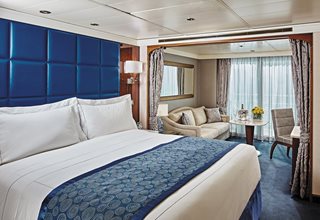
Category: H
Even the smaller suites on Seven Seas Navigator® are spacious, smartly designed and luxuriously furnished. This suite offers a large picture window that lets you rejoice in magnificent ocean views and plenty of natural light. Settle into your cozy surroundings, pamper yourself with lavish bath products, wrap yourself in a plush bathrobe and uncork your welcome bottle of Champagne as your ship heads out to sea.
Suite size: 28 m²
Balcony size: 0 m²
Amenities:- Valet Laundry Service
- Unlimited Wi-Fi includes one log-in, one device, per suite*
- Welcome Bottle of Champagne with Fresh Fruit Arrangement
- In-Suite Mini-Bar Set-Up and Refill
- 24-Hour Room Service
- L'Occitane® Jasmin & Bergamote Soaps, Shampoos, and Lotions
- Regent Plush Bathrobes and Slippers
- Vanity and Hair Dryer
- Interactive Flat-Screen Television With Extensive Media Library, Complimentary Movies-on-Demand
- Direct-Dial Satellite Phone
- Shoe Shine Service

Category: G
Even the smaller suites on Seven Seas Navigator® are spacious, smartly designed and luxuriously furnished. This suite offers a large picture window that lets you rejoice in magnificent ocean views and plenty of natural light. Settle into your cozy surroundings, pamper yourself with lavish bath products, wrap yourself in a plush bathrobe and uncork your welcome bottle of Champagne as your ship heads out to sea.
Suite size: 28 m²
Balcony size: 0 m²
Amenities:- Valet Laundry Service
- Unlimited Wi-Fi includes one log-in, one device, per suite*
- Welcome Bottle of Champagne with Fresh Fruit Arrangement
- In-Suite Mini-Bar Set-Up and Refill
- 24-Hour Room Service
- L'Occitane® Jasmin & Bergamote Soaps, Shampoos, and Lotions
- Regent Plush Bathrobes and Slippers
- Vanity and Hair Dryer
- Interactive Flat-Screen Television With Extensive Media Library, Complimentary Movies-on-Demand
- Direct-Dial Satellite Phone
- Shoe Shine Service
Features a European king-size bed, a sitting area, a marble bathroom, a walk-in closet and a balcony. Concierge Level is available.

Category: F
Every inch of this suite has been thoughtfully designed to maximize interior space and embrace the magnificent scenery outdoors. From the sitting area, admire the ocean views through the floor-to-ceiling windows, or better yet, take a seat outside on your private balcony to watch the world go by. Elegant finishes such as luxurious bedding and beautiful marble detailing in the bath further enhance your comfort.
Suite size: 28 m²
Balcony size: 5.1 m²
Amenities:- Valet Laundry Service
- Unlimited Wi-Fi includes one log-in, one device, per suite*
- Welcome Bottle of Champagne with Fresh Fruit Arrangement
- In-Suite Mini-Bar Set-Up and Refill
- 24-Hour Room Service
- L'Occitane® Jasmin & Bergamote Soaps, Shampoos, and Lotions
- Regent Plush Bathrobes and Slippers
- Vanity and Hair Dryer
- Interactive Flat-Screen Television With Extensive Media Library, Complimentary Movies-on-Demand
- Direct-Dial Satellite Phone
- Shoe Shine Service

Category: E
Every inch of this suite has been thoughtfully designed to maximize interior space and embrace the magnificent scenery outdoors. From the sitting area, admire the ocean views through the floor-to-ceiling windows, or better yet, take a seat outside on your private balcony to watch the world go by. Elegant finishes such as luxurious bedding and beautiful marble detailing in the bath further enhance your comfort.
Suite size: 28 m²
Balcony size: 5.1 m²
Amenities:- Valet Laundry Service
- Unlimited Wi-Fi includes one log-in, one device, per suite*
- Welcome Bottle of Champagne with Fresh Fruit Arrangement
- In-Suite Mini-Bar Set-Up and Refill
- 24-Hour Room Service
- L'Occitane® Jasmin & Bergamote Soaps, Shampoos, and Lotions
- Regent Plush Bathrobes and Slippers
- Vanity and Hair Dryer
- Interactive Flat-Screen Television With Extensive Media Library, Complimentary Movies-on-Demand
- Direct-Dial Satellite Phone
- Shoe Shine Service
Spacious suites feature an in-suite iPad, daily canapés and upgraded bathroom amenities.
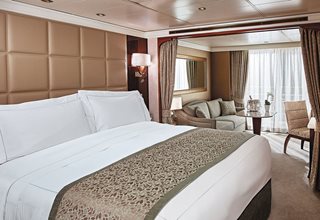
Category: A
The luxurious suite has been carefully designed to maximize space and comfort. Relax on your private balcony and indulge in your lavish bath amenities as you recharge and ready yourself for new adventures in the next port of call. This suite also includes priority online reservations for shore excursions and dining, and you're encouraged to call on the services of a personal butler for special requests.
Suite size: 28 m²
Balcony size: 5.1 m²
Amenities:- Valet Laundry Service
- 1-Night Pre-Cruise Hotel Package Including:
- Ground Transfers
- Breakfast
- Porterage
- Unlimited Wi-Fi includes up to four logins, four devices, per suite
- 15 Minutes of Ship-to-Shore Phone Time
- Guerlain and L'Occitane® Jasmin & Bergamote Soaps, Shampoos, and Lotions
- Personal Butler
- Welcome Bottle of Champagne with Fresh Fruit Arrangement
- Complimentary Pressing on First Night
- In-Suite Mini-Bar Set-Up and Refill
- 24-Hour Room Service
- Priority Online Shore Excursions and Dining Reservations
- 10% Discount on Premium Wine and Liquor
- 5% savings on Pre- or Post-Cruise Hotel or Land Programs
- 5% savings on Regent Choice Shore Excursions
- Selection of Bed Pillow Styles
- Regent Plush Bathrobes and Slippers
- Daily Canapés
- Personalized Stationery
- BOSE® SoundLink Mini II Bluetooth Speaker
- Binoculars, illy® Espresso Maker, and Cashmere Blankets
- Vanity and Hair Dryer
- Interactive Flat-Screen Television With Extensive Media Library, Complimentary Movies-on-Demand
- Direct-Dial Satellite Phone
- Shoe Shine Service
- Essentials Including Men's Unscented Shaving Kit, Facial Wipes, Sewing Kit, Emory Board, Stain Remover, and Hand Sanitizer
- Complimentary Tote Bag

Category: B
The luxurious suite has been carefully designed to maximize space and comfort. Relax on your private balcony and indulge in your lavish bath amenities as you recharge and ready yourself for new adventures in the next port of call. This suite also includes priority online reservations for shore excursions and dining, and you're encouraged to call on the services of a personal butler for special requests.
Suite size: 28 m²
Balcony size: 5.1 m²
Amenities:- Valet Laundry Service
- 1-Night Pre-Cruise Hotel Package Including:
- Ground Transfers
- Breakfast
- Porterage
- Unlimited Wi-Fi includes up to four logins, four devices, per suite
- 15 Minutes of Ship-to-Shore Phone Time
- Guerlain and L'Occitane® Jasmin & Bergamote Soaps, Shampoos, and Lotions
- Personal Butler
- Welcome Bottle of Champagne with Fresh Fruit Arrangement
- Complimentary Pressing on First Night
- In-Suite Mini-Bar Set-Up and Refill
- 24-Hour Room Service
- Priority Online Shore Excursions and Dining Reservations
- 10% Discount on Premium Wine and Liquor
- 5% savings on Pre- or Post-Cruise Hotel or Land Programs
- 5% savings on Regent Choice Shore Excursions
- Selection of Bed Pillow Styles
- Regent Plush Bathrobes and Slippers
- Daily Canapés
- Personalized Stationery
- BOSE® SoundLink Mini II Bluetooth Speaker
- Binoculars, illy® Espresso Maker, and Cashmere Blankets
- Vanity and Hair Dryer
- Interactive Flat-Screen Television With Extensive Media Library, Complimentary Movies-on-Demand
- Direct-Dial Satellite Phone
- Shoe Shine Service
- Essentials Including Men's Unscented Shaving Kit, Facial Wipes, Sewing Kit, Emory Board, Stain Remover, and Hand Sanitizer
- Complimentary Tote Bag

Category: C
The luxurious suite has been carefully designed to maximize space and comfort. Relax on your private balcony and indulge in your lavish bath amenities as you recharge and ready yourself for new adventures in the next port of call. This suite also includes priority online reservations for shore excursions and dining, and you're encouraged to call on the services of a personal butler for special requests.
Suite size: 28 m²
Balcony size: 5.1 m²
Amenities:- Valet Laundry Service
- 1-Night Pre-Cruise Hotel Package Including:
- Ground Transfers
- Breakfast
- Porterage
- Unlimited Wi-Fi includes up to four logins, four devices, per suite
- 15 Minutes of Ship-to-Shore Phone Time
- Guerlain and L'Occitane® Jasmin & Bergamote Soaps, Shampoos, and Lotions
- Personal Butler
- Welcome Bottle of Champagne with Fresh Fruit Arrangement
- Complimentary Pressing on First Night
- In-Suite Mini-Bar Set-Up and Refill
- 24-Hour Room Service
- Priority Online Shore Excursions and Dining Reservations
- 10% Discount on Premium Wine and Liquor
- 5% savings on Pre- or Post-Cruise Hotel or Land Programs
- 5% savings on Regent Choice Shore Excursions
- Selection of Bed Pillow Styles
- Regent Plush Bathrobes and Slippers
- Daily Canapés
- Personalized Stationery
- BOSE® SoundLink Mini II Bluetooth Speaker
- Binoculars, illy® Espresso Maker, and Cashmere Blankets
- Vanity and Hair Dryer
- Interactive Flat-Screen Television With Extensive Media Library, Complimentary Movies-on-Demand
- Direct-Dial Satellite Phone
- Shoe Shine Service
- Essentials Including Men's Unscented Shaving Kit, Facial Wipes, Sewing Kit, Emory Board, Stain Remover, and Hand Sanitizer
- Complimentary Tote Bag

Category: D
In this superbly designed suite, you enjoy the comfort of richly furnished accommodations as well as exclusive luxuries available only in suites at the Concierge level and higher. Your suite includes amenities such as an illy® espresso maker and cashmere blankets, perfect for use in the morning when you wish to sip coffee and enjoy an in-suite breakfast on your private balcony. Take advantage of 24-hour room service when the mood strikes.
Suite size: 28 m²
Balcony size: 5.1 m²
Amenities:- Valet Laundry Service
- 1-Night Pre-Cruise Hotel Package Including:
- Ground Transfers
- Breakfast
- Porterage
- Unlimited Wi-Fi includes up to four logins, four devices, per suite
- 15 Minutes of Ship-to-Shore Phone Time
- L'Occitane® Jasmin & Bergamote Soaps, Shampoos, and Lotions
- Welcome Bottle of Champagne with Fresh Fruit Arrangement
- In-Suite Mini-Bar Set-Up and Refill
- 24-Hour Room Service
- Priority Online Shore Excursions and Dining Reservations
- 10% Discount on Premium Wine and Liquor
- 5% savings on Pre- or Post-Cruise Hotel or Land Programs
- 5% savings on Regent Choice Shore Excursions
- Regent Plush Bathrobes and Slippers
- Binoculars, illy® Espresso Maker, and Cashmere Blankets
- Vanity and Hair Dryer
- Interactive Flat-Screen Television With Extensive Media Library, Complimentary Movies-on-Demand
- Direct-Dial Satellite Phone
- Shoe Shine Service
- Complimentary Tote Bag
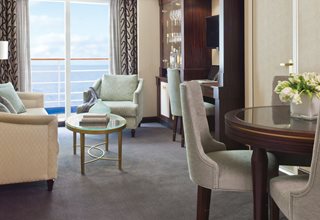
Category: GS
Step into the richness of a dining area perfectly ensconced within a spacious, art-filled living room. Just outside is a private balcony with a table and chairs just right for in-suite breakfast. The private bedroom is large and inviting, its soothing color palette conducive to a peaceful night's rest on your King-Sized Elite Slumber™ Bed. Two full baths and luxurious bath products invite you to indulge in unrushed 'me time'.
Suite size: 48.2-59.4 m²
Balcony size: 6.0-18.6 m²
Amenities:- 1-Night Pre-Cruise Hotel Package Including:
- Ground Transfers
- Breakfast
- Porterage
- Unlimited Wi-Fi includes up to four logins, four devices, per suite
- 15 Minutes of Ship-to-Shore Phone Time
- Valet Laundry Service
- Choice of Guerlain, Acqua di Parma, and L'Occitane® Jasmin & Bergamote Soaps, Shampoos, and Lotions
- Guerlain Fragrance and Spongellé Buffer
- Personal Butler
- Priority Check-in on embarkation day with suite access at Noon
- Welcome Bottle of Premium Champagne
- Complimentary Pressing on First Night
- VIP Status to Include Dinner with a Senior Officer
- Welcome Letter from President and General Manager
- Complimentary Cocktail Party for 8
- Personalized In-Suite Full-Liquor Bar Set-Up
- 1 Sumptuous In-Suite Caviar Service
- Guaranteed Reservation Each Night in Specialty Restaurant of Your Choice†
- Complimentary 25-Minute Personal Fitness Session at the Serene Spa & Wellness™ Fitness Center
- 24-Hour Room Service with Specialty Restaurant Selections During Dining Hours
- Priority Online Shore Excursions and Dining Reservations
- 10% Discount on Premium Wine and Liquor
- 5% savings on Pre- or Post-Cruise Hotel or Land Programs
- 5% savings on Regent Choice Shore Excursions
- Selection of Bed Pillow Styles
- Selection of Fig and Tea Leaves Bath Salts
- Regent Plush Bathrobes and Slippers
- Daily Canapés
- Luxe Fruit Arrangement and Chocolate Leonidas
- Tea Forte Set-Up
- Personalized Stationery
- BOSE® SoundLink Mini II Bluetooth Speaker
- Delivery of Up to Three Daily Newspapers
- World Atlas and Elegant Weather Clock
- Binoculars, illy® Espresso Maker, and Cashmere Blankets
- Bath Scale
- Vanity and Hair Dryer
- Interactive Flat-Screen Television With Extensive Media Library, Complimentary Movies-on-Demand
- Direct-Dial Satellite Phone
- Shoe Shine Service
- Essentials Including Men's Unscented Shaving Kit, Facial Wipes, Sewing Kit, Emory Board, Stain Remover, Hand Sanitizer and Dental Care
- Complimentary Tote Bag
- 1-Night Pre-Cruise Hotel Package Including:
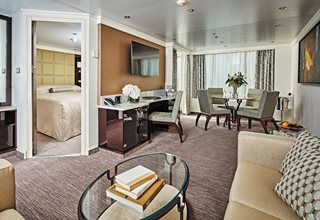
Category: NS
Spoiled for choice will describe your time in this suite. Do you stretch out on a couch in the living room or a lounge on your private balcony? Do you enjoy in-suite breakfast on the balcony or at your inside table? Its spaciousness extends to a large bedroom with a king-sized bed, roomy walk-in closet and a gleaming, gorgeous bath. You're also encouraged to use the services of a personal butler, making every moment in your suite magical.
Suite size: 35.8-41.6 m²
Balcony size: 4.4-5.2 m²
Amenities:- Valet Laundry Service
- 1-Night Pre-Cruise Hotel Package Including:
- Ground Transfers
- Breakfast
- Porterage
- Unlimited Wi-Fi includes up to four logins, four devices, per suite
- 15 Minutes of Ship-to-Shore Phone Time
- Choice of Guerlain and L'Occitane® Jasmin & Bergamote Soaps, Shampoos, and Lotions
- Personal Butler
- Priority boarding on Embarkation Day with Suite Access at 1:00 pm
- Welcome Bottle of Premium Champagne
- Welcome Letter from President and General Manager
- Complimentary Pressing on First Night
- Personalized In-Suite Full-Liquor Bar Set-Up
- 1 Sumptuous In-Suite Caviar Service
- 24-Hour Room Service
- Priority Online Shore Excursions and Dining Reservations
- 10% Discount on Premium Wine and Liquor
- 5% savings on Pre- or Post-Cruise Hotel or Land Programs
- 5% savings on Regent Choice Shore Excursions
- Selection of Bed Pillow Styles
- Selection of Fig and Tea Leaves Bath Salts
- Regent Plush Bathrobes and Slippers
- Daily Canapés
- Personalized Stationery
- BOSE® SoundLink Mini II Bluetooth Speaker
- Delivery of Up to Three Daily Newspapers
- World Atlas and Elegant Weather Clock
- Binoculars, illy® Espresso Maker, and Cashmere Blankets
- Bath Scale
- Vanity and Hair Dryer
- Interactive Flat-Screen Television With Extensive Media Library, Complimentary Movies-on-Demand
- Direct-Dial Satellite Phone
- Shoe Shine Service
- Essentials Including Men's Unscented Shaving Kit, Facial Wipes, Sewing Kit, Emory Board, Stain Remover, and Hand Sanitizer
- Complimentary Tote Bag
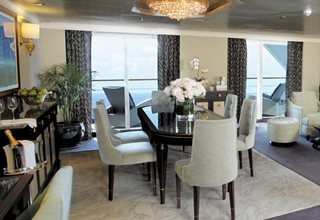
Category: SG
You'll find Park Avenue chic onboard Seven Seas Navigator® in this spectacular suite. Elegant rosewood furniture, luxe fabrics and a crystal chandelier create sophisticated comfort, while a personal butler is available to fulfill whatever requests you may have. With one bedroom, two-and-a-half baths, a large living room and two private balconies, this sublime suite is perfect for hosting new friends in luxury.
The suite pictured may differ from the suite booked, as layouts and designs vary by ship, deck, and suite location.
Suite size: 79.1-99.1 m²
Balcony size: 9.9-15.8 m²
Amenities:- 1-Night Pre-Cruise Hotel Package Including:
- Ground Transfers
- Breakfast
- Porterage
- Unlimited Wi-Fi includes up to four logins, four devices, per suite
- 15 Minutes of Ship-to-Shore Phone Time
- Valet Laundry Service
- Choice of Guerlain, Acqua di Parma, and L'Occitane® Jasmin & Bergamote Soaps, Shampoos, and Lotions
- Guerlain Fragrance and Spongellé Buffer
- Personal Butler
- Welcome Bottle of Premium Champagne
- Priority Check-in on embarkation day with suite access at Noon
- Complimentary Pressing on First Night
- VIP Status to Include Dinner with a Senior Officer
- Welcome Letter from President and General Manager
- Complimentary Cocktail Party for 8
- Personalized In-Suite Full-Liquor Bar Set-Up
- 1 Sumptuous In-Suite Caviar Service
- Guaranteed Reservation Each Night in Specialty Restaurant of Your Choice†
- Complimentary 25-Minute Personal Fitness Session at the Serene Spa & Wellness™ Fitness Center
- 24-Hour Room Service with Specialty Restaurant Selections During Dining Hours
- Priority Online Shore Excursions and Dining Reservations
- 10% Discount on Premium Wine and Liquor
- 5% savings on Pre- or Post-Cruise Hotel or Land Programs
- 5% savings on Regent Choice Shore Excursions
- Selection of Bed Pillow Styles
- Selection of Fig and Tea Leaves Bath Salts
- Regent Plush Bathrobes and Slippers
- Daily Canapés
- Luxe Fruit Arrangement and Chocolate Leonidas
- Tea Forte Set-Up
- Personalized Stationery
- BOSE® SoundLink Mini II Bluetooth Speaker
- Complimentary Shore Excursion Bag
- Delivery of Up to Three Daily Newspapers
- World Atlas and Elegant Weather Clock
- Binoculars, illy® Espresso Maker, and Cashmere Blankets
- Bath Scale
- Vanity and Hair Dryer
- Interactive Flat-Screen Television With Extensive Media Library, Complimentary Movies-on-Demand
- Direct-Dial Satellite Phone
- Shoe Shine Service
- Essentials Including Men's Unscented Shaving Kit, Facial Wipes, Sewing Kit, Emory Board, Stain Remover, Hand Sanitizer and Dental Care
- Complimentary Tote Bag
- 1-Night Pre-Cruise Hotel Package Including:
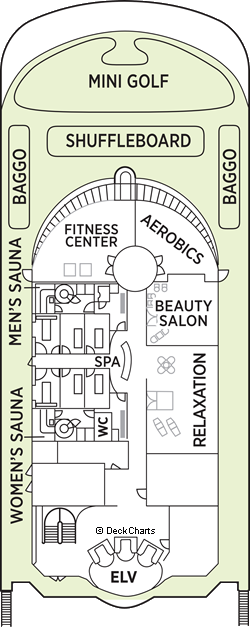
| Symbol | Description |
|---|---|
 | Three guest capacity suite; convertible sofa bed |
 | Wheelchair accessible suites have shower stall instead of bathtub |
 | Connecting suites |
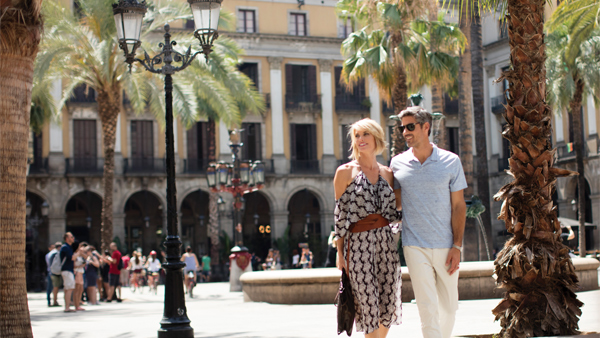
- Ship Name: Seven Seas Navigator
- Year Built: 1999
- Year Refurbished: 2019
- Year Entered Present Fleet: 1999
- Ship Class: Navigator
- Maximum Capacity: 490
- Number of Passenger Decks: 8
- Number of Crew: 345
- Officers' Nationality: International
- Ocean-View without Balcony: 37
- Tonnage (GRT): 28,803
- Capacity Based on Double Occupancy: 490
- Country of Registry: The Bahamas
- Total Staterooms: 245
- Suites with Balcony: 208
- Crew/Hotel Staff Nationality: European/International
Available Dates & Prices
Terms & Conditions
*Price shown is per person based on double occupancy, is valid for select stateroom categories only, and does include government taxes/fees and gratuities. Click on the Terms & Conditions link below for details.
**Select complimentary shore excursions are for full-fare guests only, capacity controlled and subject to availability. Shore excursion reservations are accepted on a first-come, first-served basis. Please note, available excursions vary by sailing date and day of the week. Government fees and taxes are included. Requested excursions may not be available at time of booking. Supplement will apply on Regent Choice excursions and excludes Private Arrangements and all Adventures Ashore programs. Restrictions apply and penalties apply 36 hours prior to shore excursion start date.
††All shipboard credit is in U.S. dollars, is per stateroom based on double occupancy, has no cash value, is nontransferable and not redeemable for cash.
†One Digital Costco Shop Card per room/stateroom, per stay. The exact amount of the Digital Costco Shop Card will be calculated during the booking process. The Digital Costco Shop Card promotion is nontransferable and may not be combined with any other promotion. A Digital Costco Shop Card will arrive by email approximately 10 days after the start of your cruise. Click on the Terms & Conditions link below for additional information.
Ship's registry: The Bahamas
Digital Costco Shop Card
This booking includes a Digital Costco Shop Card which will arrive by email one to two weeks after you return from your vacation. The Digital Costco Shop Card is a convenient payment option in our warehouses and on Costco.com.





















